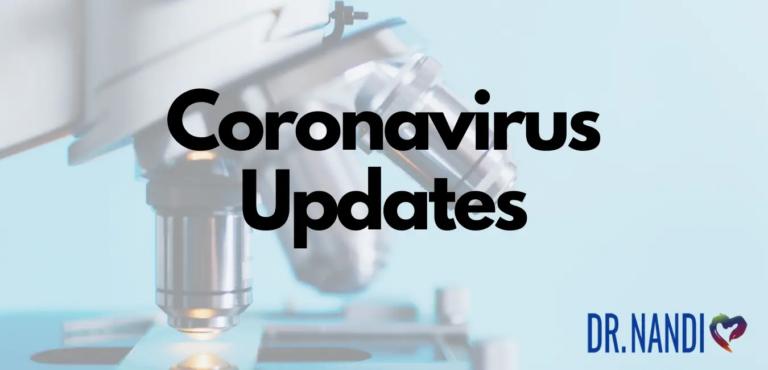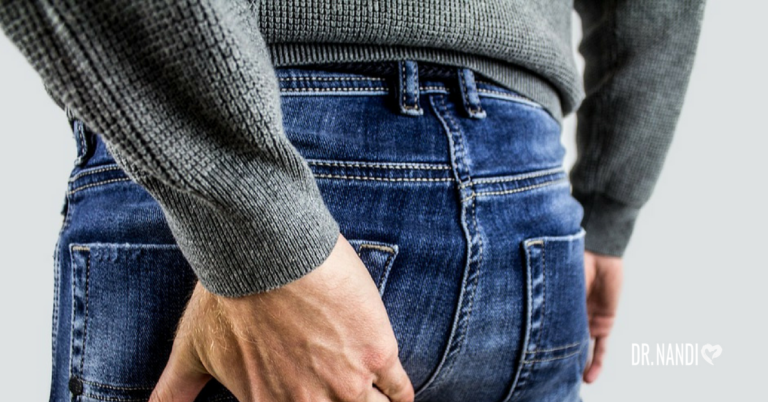If you’ve ever felt powerless against the call of a chocolate bar or the lure of a late-night ice cream binge, you’re not alone. Sugar cravings are a common challenge for many, often derailing diets and healthy eating resolutions with surprising ease. But what if the key to conquering these cravings lies not only in sheer willpower but in understanding and nurturing our gut health? Recent scientific discoveries suggest that our gut microbiome plays a pivotal role in influencing our dietary choices, potentially steering us towards those sugary snacks.
Why Do We Crave Sugar and Overeat?
Understanding why we reach for that extra cookie or can’t seem to resist dessert even when we’re full can be complex. The reasons behind our sugar cravings and tendency to overeat are multifaceted, involving factors like habit, physiological triggers, and lifestyle influences. Hunger hormones such as ghrelin, which signal hunger to the brain, and serotonin, a neurotransmitter that impacts mood and satisfaction, play significant roles. Additionally, lifestyle factors such as insufficient sleep and high stress levels can exacerbate these cravings, making us more likely to give in to them.
However, one of the less discussed but critical influencers of our dietary choices is the composition of our gut microbiota. Recent research has illuminated how these intestinal microbes might be steering our cravings, often without us even realizing it. A groundbreaking study conducted on laboratory mice, published in the Proceedings of the National Academy of Sciences, suggests that the microbes in our gut can significantly influence our food preferences. These microbes thrive on certain macronutrients—proteins, carbohydrates, and fats—and they can manipulate our choices by producing amino acids that enhance cravings for foods that benefit them, often high in sugar or fat. [1]
The study involved transplanting gut microbes from wild rodents with varied diets into mice that lacked gut microbes. Remarkably, the mice started to prefer foods rich in the nutrients their new microbiomes thrived on. This suggests that our gut bacteria can change the “messages” sent between the gut and the brain, potentially promoting cravings that are more about feeding the bacteria than nourishing our bodies.

One specific example of this microbial influence involves tryptophan, an essential amino acid. Not only is tryptophan found in foods like turkey, but it is also produced by certain gut microbes. Once it reaches the brain, it’s transformed into serotonin, aiding in feeling satiated, and eventually, into melatonin, which can make you feel sleepy. The study showed that mice with microbiomes capable of producing more tryptophan had higher levels of it in their blood, suggesting that these microbes could push hosts to consume tryptophan-rich foods, thereby benefiting both the host and the microbes.
This emerging science offers a fascinating glimpse into the hidden power of our gut microbiota and how it could be subtly influencing our dietary choices. While more research is needed, especially in humans, these findings hint at the potential of managing cravings and overeating by nurturing a balanced gut microbiome.
Eating Sugar Makes You Crave Sugar
The connection between what we eat and what we crave can often seem like a vicious cycle, especially when it comes to sugar. This interplay is significantly influenced by the gut microbiome, which is shaped by our dietary choices and, in turn, shapes our cravings. Consuming high amounts of sugar and processed foods can lead to an overgrowth of certain types of bacteria in our intestines that thrive on these sugary diets. As these bacteria flourish, they influence our body to crave more sugar, creating a feedback loop that perpetuates this craving.
The gut’s demand for sugar isn’t just a simple craving but a biological signal influenced by the microbiome’s need to sustain the bacteria that feed on these sugars. This understanding points to why it can be so challenging to break the habit of sugar consumption. Each sugary snack can reinforce the population of sugar-loving bacteria, which then continue to drive those cravings, making it difficult to resist the next sugary treat.
To disrupt this cycle, reducing sugar intake is crucial. Cutting back on sugar can help shift the balance of gut bacteria towards those that favor a healthier, more diverse microbiome. However, it’s important to recognize that changes in dietary habits won’t lead to immediate changes in cravings. If the gut microbiome is still dominated by bacteria that thrive on sugar, cravings will persist until the microbial balance is sufficiently altered. This transition requires consistent dietary adjustments and patience, as the gut environment adapts to a new norm with less reliance on sugar.

What to Feed Your Gut Microbiome
Recent advancements in microbiome research reveal fascinating insights into how certain bacteria can influence our eating behaviors, particularly our cravings for sweet or fatty foods. A study by researchers from the California Institute of Technology has identified two specific bacterial groups that play pivotal roles in controlling these cravings.
The study began with researchers clearing the existing gut microbiota of mice using antibiotics, which essentially reset their gut environments. Subsequent restoration of the gut microbiota through fecal transplants revealed that only certain types of bacteria influenced the mice’s dietary choices, particularly reducing their overconsumption of palatable foods. The key bacteria identified were Lactobacillus johnsonii and a bacterial group known as S24-7. These bacteria have shown the ability to suppress the compulsion to overconsume sugary and fatty foods. [2]
Lactobacillus johnsonii, a part of the broader Lactobacillus genus, is naturally present in the human body and is known for its numerous health benefits. These beneficial bacteria not only help break down food and absorb nutrients but also combat harmful organisms that could lead to diseases. They are commonly found in fermented foods and are often included in dietary supplements.
Here are some of the top probiotic foods to consider incorporating into your daily meals to support gut health and potentially reduce compulsive eating behaviors:
- Yogurt: One of the most well-known probiotic foods, yogurt is made from fermented milk and contains a variety of beneficial bacteria. Look for labels that mention “live and active cultures” to ensure you’re getting the probiotic benefits.
- Kefir: Similar to yogurt but in a drinkable form, kefir is a fermented dairy product that’s rich in probiotics. It typically contains several major strains of friendly bacteria and yeast, making it a diverse and potent source of probiotics.
- Sauerkraut: Made from fermented cabbage and other vegetables, sauerkraut is not only rich in probiotics but also vitamins B, C, and K. It’s low in calories and high in fiber, making it a healthy addition to your diet. Ensure you choose unpasteurized sauerkraut, as pasteurization kills the live and active bacteria.
- Kimchi: A staple in Korean cuisine, this spicy, fermented cabbage dish is similar to sauerkraut but with a blend of different seasonings. Kimchi is loaded with vitamins A and C, and like sauerkraut, contains Lactobacillus kimchii as well as other probiotics.
- Miso: A Japanese seasoning produced by fermenting soybeans with salt and koji (a type of fungus), miso is typically used in miso soup. It’s a good source of protein and fiber and is packed with a range of probiotics.
- Tempeh: Originating from Indonesia, tempeh is made from fermented soybeans and has a distinctive nutty flavor. It’s a great vegetarian protein source and contains a substantial amount of the probiotic Bacillus subtilis.
- Pickles: Fermented cucumbers, known as pickles, can be a probiotic food if made with a salt and water solution (not vinegar). These are rich in Lactobacillus bacteria, which may help improve digestive health.

My Personal RX on Holistic Strategies to Manage Sugar Addiction and Unhealthy Cravings
Tackling sugar cravings and overcoming sugar addiction isn’t just about willpower; it’s about creating a lifestyle that diminishes the urge to reach for a sweet treat every time a craving hits. Whether it’s the afternoon slump or post-dinner dessert habits, sugar has a sneaky way of inserting itself into our daily lives. To break this cycle, a holistic approach is essential—not only tweaking what we eat but also how we manage other aspects of our lives. Here are my personalized strategies that go beyond diet to help you keep those sugary urges at bay and foster a healthier relationship with food.
- Balance Your Meals: Ensure your meals are balanced with a good mix of proteins, fats, and fibers. This combination helps stabilize blood sugar levels and can prevent the highs and lows that lead to sugar cravings. For instance, adding a source of protein like chicken or beans to your meals can keep you fuller for longer and help deter the urge to snack on sugary foods.
- Choose Whole Foods Over Processed: Processed foods often contain hidden sugars that can exacerbate cravings. Opt for whole, unprocessed foods such as fruits, vegetables, whole grains, and lean meats. These foods are more nutritionally dense and provide longer-lasting energy without the sugar spikes.
- Hydrate Effectively: Sometimes, what feels like a sugar craving is actually dehydration. Drinking enough water throughout the day can help you mitigate this, and it’s beneficial for overall health. Try to drink at least 8 glasses of water a day, or more if you’re active or it’s hot.
- Get Enough Sleep: Lack of sleep can increase cravings for high-calorie, sugary foods. Aim for 7-9 hours of quality sleep per night to help regulate hunger hormones and improve overall health.
- Manage Stress Levels: High stress can lead to emotional eating and increased cravings for sugar. Techniques such as yoga, meditation, deep breathing exercises, or even regular physical activity can reduce stress and decrease the likelihood of reaching for sugary snacks.
- Mindful Eating: Being more mindful about why and how you eat can help break the cycle of mindless snacking and overeating. Pay attention to your hunger cues and try to eat slowly, savoring each bite, which can lead to better digestion and satisfaction with less food.
- Incorporate MindBiotic: MindBiotic contains a synergistic blend of probiotics, prebiotics, and Ashwagandha, which can help stabilize the gut-brain axis. This stabilization is key in managing cravings and mood, often linked to overeating and sugar addiction. Regular use can support a healthier digestive system and improve emotional resilience, making it easier to resist cravings.
- Find Healthy Alternatives: If you have a sweet tooth, look for healthier alternatives that can satisfy your craving without the sugar rush. For example, dark chocolate (with a high cocoa content) is a better choice than milk chocolate, and sweet fruits like berries can also quell sweet cravings.
- Use Recipes from the Diabetes Cookbook: This cookbook is an excellent resource for finding delicious, low-sugar recipes that can satisfy your taste buds without feeding your sugar addiction. It also offers meals that are balanced in macronutrients, which can help prevent overeating by keeping you fuller longer.
- Regular Physical Activity: Exercise can help control sugar cravings by increasing energy levels and releasing endorphins, which can reduce the desire for sugary foods. Even a short walk can make a significant difference in how you handle cravings.
Sources:
- Trevelline, B. K., & Kohl, K. D. (2022). The gut microbiome influences host diet selection behavior. Proceedings of the National Academy of Sciences, 119(17). https://doi.org/10.1073/pnas.2117537119
- Ousey, J., Boktor, J. C., & Mazmanian, S. K. (2022). Gut microbiota suppress feeding induced by palatable foods. Current Biology, 33(1), 147-157.e7. https://doi.org/10.1016/j.cub.2022.10.066











 Subscribe to Ask Dr. Nandi YouTube Channel
Subscribe to Ask Dr. Nandi YouTube Channel










